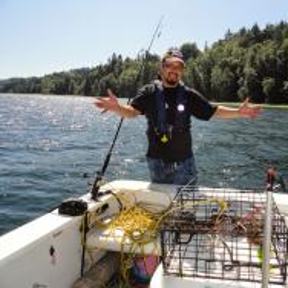Welcome to the Onshape forum! Ask questions and join in the discussions about everything Onshape.
First time visiting? Here are some places to start:- Looking for a certain topic? Check out the categories filter or use Search (upper right).
- Need support? Ask a question to our Community Support category.
- Please submit support tickets for bugs but you can request improvements in the Product Feedback category.
- Be respectful, on topic and if you see a problem, Flag it.
If you would like to contact our Community Manager personally, feel free to send a private message or an email.
Start a new sketch on a curved plane / shaft [with animated GIF]
 daniel_chow
Member Posts: 108 ✭✭✭
daniel_chow
Member Posts: 108 ✭✭✭
Quick question, I'm trying to put a bolt hole through the top of the cyan colored cylindrical shaft. It won't let me start a new sketch to draw a hole. But I am able to start a new sketch on a flat surface. What am I doing wrong here?
Also what is the best method to draw a hole through the curved surface of the shaft? What about a blind hole? A slotted keyway?
Here is a link to the public document.

Also what is the best method to draw a hole through the curved surface of the shaft? What about a blind hole? A slotted keyway?
Here is a link to the public document.

0
Best Answers
-
 Narayan_K
Member Posts: 379 ✭✭✭
@ daniel_chow , make one plane tangent cyan colored cylindrical shaft then make a sketch in that plane and perform hole operation.
Narayan_K
Member Posts: 379 ✭✭✭
@ daniel_chow , make one plane tangent cyan colored cylindrical shaft then make a sketch in that plane and perform hole operation.
5 -
 andrew_troup
Member, Mentor Posts: 1,585 ✭✭✭✭✭
Just to be perfectly clear:
andrew_troup
Member, Mentor Posts: 1,585 ✭✭✭✭✭
Just to be perfectly clear:
Onshape does not yet provide 3D sketching.
Hence all sketches, by definition, must be 2D.
A corollary: a quick way to verify that a selected model face is planar: check whether Onshape will initiate a sketch on it.5
Answers
Onshape does not yet provide 3D sketching.
Hence all sketches, by definition, must be 2D.
A corollary: a quick way to verify that a selected model face is planar: check whether Onshape will initiate a sketch on it.
For anyone else searching about the hole feature in onShape, here is a video:
https://www.youtube.com/watch?v=408ixoD64QM
One further thought: it makes sense to require a flat plane to define a hole through a cylindrical body.
Without such a plane, Onshape would not know to what direction vector the hole axis should lie parallel.
Given a plane, the normal to that plane defines the direction.
ON EDIT
A truly brilliant thing about Onshape's Hole feature (and not by any stretch the only brilliant thing) is that unlike the situtation in most legacy MCAD apps, a single hole feature is not tied to a single plane.
Instead, it refers directly to sketch points, which can be on as many different planes as the user needs hole directions.
FURTHER EDIT
Actually another of those brilliant things is relevant to this discussion about planes: unlike legacy MCAD, the plane in Onshape is NOT necessarily used as the datum for hole depth, when a better option exists
(refer Daniel's linked video, from 0m44s)